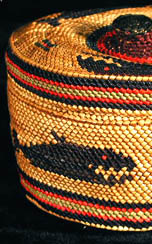|
INTRODUCTION
According to some floral greens distributors, beargrass may constitute the highest volume floral green product exported to Europe (Thomas, 1993:2). Beargrass is not a true grass; it is actually a member of the lily family. Beargrass is named for its long, thin leaf blades that grow in basal whorls resembling clumps or tufts of grass. Bears were commonly seen digging for the starchy underground rhizomes in the springtime, and it is common lore among Native Americans that grizzly bears sometimes use the leaf blades for bedding, hence the common name beargrass (Pojar, 1994:112).
|
|
ECOLOGY
Beargrass is an evergreen herb with tough, fibrous leaves that grow in basal whorls or tussocks. Native Americans traditionally harvested these leaves for use in weaving baskets. Today the strong, fine, pliable center leaves are still harvested for their use in the age-old tradition of basketry. In addition to this though they are now harvested commercially for use in floral arrangements as greenery. They are also sometimes sold dried, in craft stores, for use in arts and crafts projects or as household decoration.
Beargrass grows in clearings and meadows and in open to fairly dense forest from near sea level on the Olympic peninsula to the sub-alpine meadows of the Cascade Range. It ranges from British Columbia, Montana and Nevada to the Sierra Nevadas of central California. Beargrass begins to bloom at lower elevations, about 3,000 feet, in June and continues into August at elevations up to 8,000 feet (Pojar, 1994:112). |
HISTORY
Beargrass is used primarily as a greens stock in floral arrangements. It is also used for craft projects and decoration. Beargrass leaves are available in many different forms, depending on the intended use. They are available fresh, for use in live flower arrangements. They are available dried, for craft projects and decoration. These leaves are durable and accept many natural and synthetic dyes. Some floral greens wholesalers have espoused this product as the highest volume European export of all the floral greens products. Beargrass has proven to be a very versatile and sought after product suited to a variety of uses.
|
|
Native Americans throughout the western U.S. have been harvesting beargrass for centuries, probably eons. It seems inevitable that they would have recognized the utilitarian nature of the plant’s tough, fibrous leaves early on. For a people as industrious and familiar with the natural landscape as the Native Americans, beargrass would have been an obvious choice for weaving baskets and braiding cordage. The leaves have been dyed and woven into cedar bark baskets, cedar bark clothes, and mats, and used to braid cordage. Native Americans roasted the roots for food and dried and bleached the leaves for dying, weaving and padding.
Beargrass is still used by many Native American basket makers. The leaves can be dried, bleached and dyed using plant and mineral based pigments and woven in with other materials to produce intricate decorative patterns.
MANAGEMENT
The Forest Service sells commercial use permits to harvest floral greens and beargrass products under a commercial use permit system. Under the permits system, the Forest Service establishes prices at the beginning of the season as well as the conditions for the permit. Most permits have a 2-week time limit, and there are minimum purchase amounts under the permits. An example of this would be requiring a harvester to purchase a permit for $1000 worth of beargrass (Lynch, 2003:4).
Beargrass grows in clear-cuts and in burn sites throughout the Northwestern United States. In some cases the Forest Service actively manages beargrass meadows under contracts with Native American Indian Tribes.
|
|
|
“Many tribes have reserved rights for gathering traditional resources off-reservation through treaties, government to government contracts, and other agreements.” (Jones, 2000:132).
Currently beargrass is not on the threatened or endangered species list. Fortunately, it is sill bountiful and reproduces rapidly. When harvesting is done correctly, harvesting methods for beargrass amount to pruning and do not kill the parent plant. In the short term, there appears to be no large concern about over-harvesting. However, it does require time for the plants to regenerate. For example, it takes beargrass about 3 years to fully grow back after the core of the plants has been cut off. As the market for floral greenery products expands, the potential may well increase for over-harvesting or mismanagement of the beargrass stands. Harvesters need to be educated about the ecology of the resource and their craft and be educated on methods of sustainable harvesting.
*Compiled from a research paper by Sterling Dailey |
|



